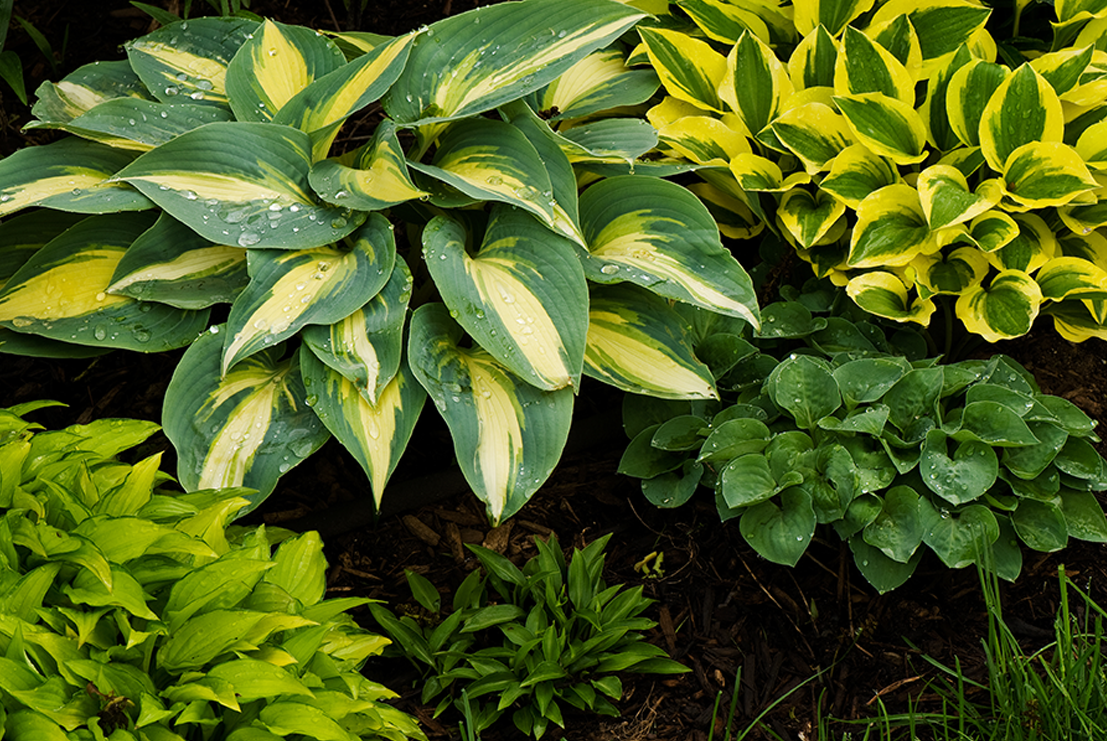Creating A Shade Garden
| By SCOTT EASTON | 0 Comments

Shady areas can be a gardening challenge. Whether it be a yard full of trees, the north side of your home or areas around a deck or shed that do not receive much sunlight, it may seem as though only moss and weeds can flourish here. Daunting though it may be, it is quite possible to create a beautiful, lush garden beneath a canopy of shade. The key is understanding the growing conditions of your shady space and choosing the right types of plants that will thrive within those conditions.
Where to Start
The first step is to understand the surrounding plants in the area, the condition of the soil and the type of shade you are working with. But shade is shade right? Not exactly… There is light shade, dappled shade, filtered shade, partial shade, full shade, deep shade – it can be confusing with so many variations of “shade”, and if you plant for the wrong kind, your plants may not live up to their full potential. There may have been a pun in there… Back to business now. Here is a great explanation of the variations of shade from The Old Farmers Almanac.
All plants require some measure of sunlight to grow and many will prefer full sun, which means 8+ hours a day of sunlight or partial sun which is 4-8 hours of sun exposure. You will see this noted on plants at your local garden center – the tags will always tell you the preferred sun exposure. If the space you are working with receives less than 4 hours of sunlight per day, the full-sun or partial-sun plants will not do well there.
Also note the condition of the soil and the surround plants. Are there trees with shallow roots that hog up all the moisture? If you can see roots or find them very close to the surface then your new plants will have to compete for the moisture in the ground and therefore should be chosen for their hardiness in dry conditions.
Once you have a good idea of the conditions you can then choose the right kinds of plants. And that is where the fun begins.
Choosing the Right Plants
Believe it or not, there is a lot of variety when it comes to choosing plants that do well in shady areas. The idea is to think about color, texture, and form, then use those elements to create contrast and depth in your shade garden. Here are some ideas to get you started.
Hydrangea – This showy shrub is a wonderful addition to a shade garden. The large puffy groups of blossoms are a favorite for both fresh bouquets and dried arrangements. Be sure to check the variety because there are many choices and there are a few that actually prefer sun to shade.
Hosta – Another popular plant for shade gardens is the hosta. These too come in a wide variety of colors and patterns, and as such are often paired together to create contrast all on their own. Hostas are very easy to grow as well, and work well in a wide range of shade levels. Favored spots for hostas are borders, pathways and containers.
Camellia – The camellia is an evergreen shrub with dark green, glossy leaves and bright pink or white blossoms that come in either the spring or the fall depending on the variety. It is a native plant of Asia and Japan and is often seen as part of the landscape in Japanese gardens.
Gardenia – Another evergreen shrub which has varieties for sun and shade, the gardenia is a wonderful accent plant that can stand on its own as a specimen or function as a hedge behind smaller plants with its dark, waxy leaves. The blossoms are creamy white, can come in spring or summer, and many varieties are very fragrant and will bloom multiple times in a season. A suggested paring is with hostas.
Dogwood – The dogwood is small ornamental tree or shrub that works nicely in shady landscapes and can add a dimension of height and depth to a space. It comes in a many varieties, but the ones we most see in Virginia are the variety with our state flower – the flowering dogwood (Cornus florida) – which are small trees with slender, horizontally weaving limbs. When they bloom in the spring, it can almost seem as though the flowers are floating the air, so dainty are the branches.
Amethyst Flower – Also known as the “bush violet” these small purple flowers are typically planted as an annual in Virginia and the blooms are long lasting, from spring until fall.
Coleus – When it comes to this annual, it’s all about the foliage. This is one exciting little plant and a guaranteed way to spice up a shade garden. There are many varieties to choose from and the options for shade are dazzling in their colors, patterns and shapes. These little plants also have a variety of growing habits from small shrubs to trailing, which means you can get especially creative!
Begonia – This perennial flower can be quite the stunner when paired with glossy green hostas or golden Japanese forest grass. Begonias also look quite nice in pots and hanging baskets.
Honeysuckle – What can be more romantic than sweet-smelling honeysuckle climbing a fence or wall in the springtime? Very fragrant, and with a wild, unruly appearance, these lovely vines can give sharp angles some soft contrast. Be cautious in your selection of Honeysuckle however, as some species can be invasive. One recommendation for a fragrant, non-invasive Honeysuckle is the Lonicera x heckrottii.
Japanese Forest Grass – Elegant and attractive, this graceful plant grows slowly and fills shady spaces with arching mounds of long, flat, blades of leaves in an array of vibrant yellowish-green tones, some with stripes. The Golden Japanese forest grass is excellent for, and will brighten up, areas of full shade.
Bleeding Heart – A native to shady woodland areas, bleeding heart is a perennial with tiny pink or white heart-shaped flowers that hang on slender, vine-like stalks. These little plants make a very subtle, but lovely addition to a shady space, and pair well with hostas and ferns.
There are endless combinations of shade-loving plants that can create an interesting and lovely garden space in your shady areas. Do not be discouraged if your plans do not work out on the first try. Once you have found the right combinations of plants that will work in your shady spaces, your shade garden should be fairly low maintenance, just be sure to mulch it all well to keep the weeds at bay, then sit back and enjoy a cool oasis of foliage and flowers in the heat of summer.
Excellent references on gardening in the shade:
Meeting the challenges of shade gardening by Anthony Bratsch, Extension Educator, Horticulture – University of Illinois Extension
Shade Garden and Plant Definitions – The Old Farmers Almanac
Plant Combinations for the Shade – Fine Gardening
Plants To Add Color To Your Shade Garden – Sunset
Distinguishing Degrees of Light and Shade – Fine Gardening
Best Shade-Loving Plants – HGTV
Plants for the Shade Garden – Horticulture Magazine
Shade Garden Plans – Better Homes and Gardens
33 Easy Ideas for Shade Gardens – Birds and Blooms









